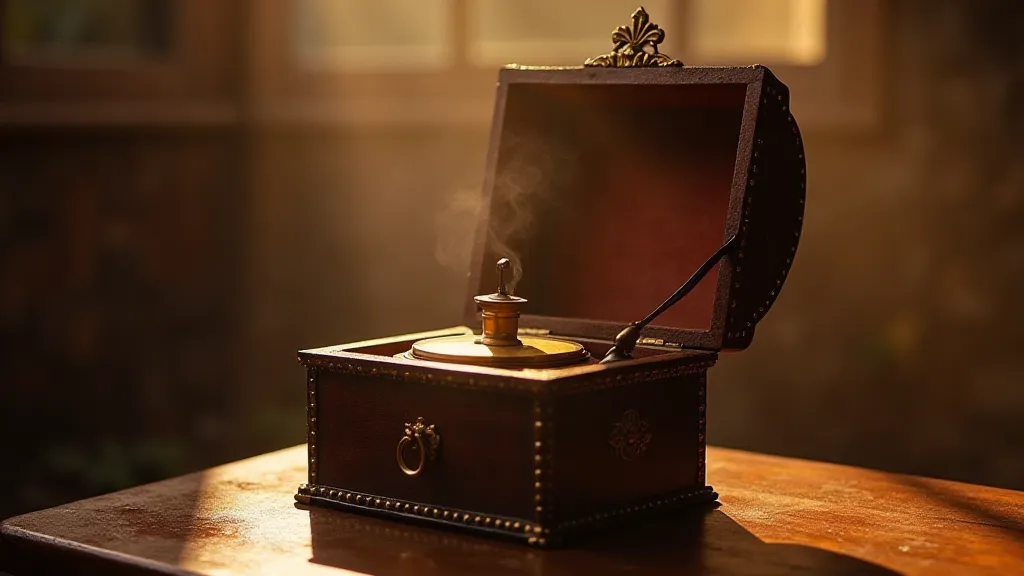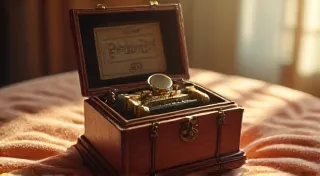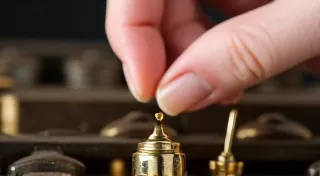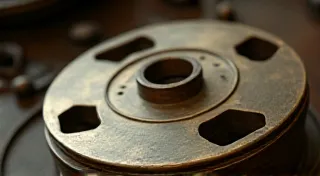Lubricating Your Vintage Music Box: Choosing the Right Oils
A beautifully restored vintage musical box is a joy to behold and listen to. But even with careful cleaning and repair, a key element remains crucial for its continued functionality and longevity: proper lubrication. Friction is the enemy of delicate mechanisms, and insufficient or incorrect lubrication can lead to increased wear, sluggish movement, and ultimately, damage. This article dives into the world of oils for vintage music boxes, outlining the best types to use and providing guidance on effective application techniques. Understanding lubrication is fundamental to preserving your cherished antique. It's also just one facet of responsible vintage music box ownership; sometimes, finding replacement parts is necessary too, but let's focus on keeping things running smoothly first!
Why Lubrication Matters: Understanding the Mechanics
Before we delve into oil selection, let’s briefly consider how a musical box works. At its core, a music box consists of a pinned cylinder (or disc in some models) that, when rotated, plucks tines to produce music. This process involves numerous small, intricately-fitted components: gears, levers, pins, and various suspension systems. Each of these parts experiences friction as they move against one another. Without adequate lubrication, this friction increases, leading to:
- Increased Wear: Friction causes metal-to-metal contact, gradually eroding components over time.
- Sluggish Movement: Resistance to movement can make the music box play slowly or unevenly.
- Noise: Dry, unlubricated parts often squeak or grind.
- Component Failure: Extreme friction can eventually cause parts to seize or break.
Choosing the Right Oil: A Deep Dive into Options
Not all oils are created equal, especially when dealing with the delicate materials and intricate mechanisms of vintage music boxes. The ideal oil should possess a specific combination of properties: thin viscosity for easy penetration, stability to prevent gumming and hardening, and compatibility with the metals and materials used in the music box (typically brass, steel, and sometimes wood or ivory). Here's a breakdown of suitable options:
1. Clock Oil: The Gold Standard
Specifically formulated for clock and watch mechanisms, clock oil is generally considered the best choice for lubricating vintage music boxes. It's designed to be thin, consistent, and long-lasting, minimizing the need for frequent re-application. Different grades of clock oil exist (e.g., 100W, 220W, 300W), with lower numbers indicating thinner viscosity. For most music box applications, a 220W or 100W clock oil is a good starting point. Always check manufacturer recommendations, if available.

2. Synthetic Oils: A Modern Alternative
Synthetic oils offer excellent stability and lubrication properties. They're resistant to temperature changes and generally don't gum up as easily as some traditional oils. However, they can sometimes be slightly thicker than clock oil, so careful application is essential to avoid over-lubrication. Look for synthetic oils specifically designed for precision instruments or fine machinery. Some hobbyists have successfully used specialized sewing machine oils, but thorough research and careful experimentation are advised. The complexity of these antique mechanisms often inspires interest in other related mechanical arts, like the creation of automata that combine music and movement – a fascinating intersection of craftsmanship.
3. Mineral Oils: Proceed with Caution
While some mineral oils (like those used for sewing machines) can be used, they aren't always the best choice. They can be thicker than clock oil and some formulations may degrade over time, leaving a sticky residue. If you opt for a mineral oil, ensure it’s a very light grade and test it on an inconspicuous area of the music box first.
Oils to Avoid: A Definitive List
- WD-40: This is a solvent and cleaner, *not* a lubricant. It will dry out quickly and can actually attract dust and debris.
- Cooking Oils: These are too thick and will quickly gum up the mechanism.
- Greases: Greases are far too viscous for the tiny, precise components of a music box.
- Silicone Sprays: These can attract dust and can potentially react with certain plastics or rubbers present in older music boxes.
Application Techniques: Less is More
Choosing the right oil is only half the battle; proper application is equally important. Over-lubrication can be just as damaging as under-lubrication, leading to dust accumulation and potential corrosion. Here are some key techniques:
1. Tools of the Trade:
- Precision Oiler: A small, needle-tipped oiler is essential for delivering tiny, controlled droplets.
- Soft Brushes: Small, soft brushes (like those used for makeup application) can help distribute the oil evenly.
- Magnifying Glass: A magnifying glass is invaluable for identifying lubrication points.
2. Strategic Application:
- Pivot Points: These are the areas where two parts rotate against each other. Apply a single, tiny drop to each pivot point.
- Gear Teeth: A very thin coating on the gear teeth will reduce friction and ensure smooth operation.
- Lever Suspension Points: Similar to pivot points, these areas benefit from a small amount of lubrication.
- Cylinder/Disc Bearings: These critical points need precise lubrication.
Important Note: It's generally best to lubricate one section of the music box at a time, operating the mechanism after each application to ensure proper function and identify any areas that may have been missed. Occasionally, the mechanism itself might become problematic. When dealing with issues like a stuck cylinder, it's crucial to take a methodical approach to diagnose and resolve the problem.
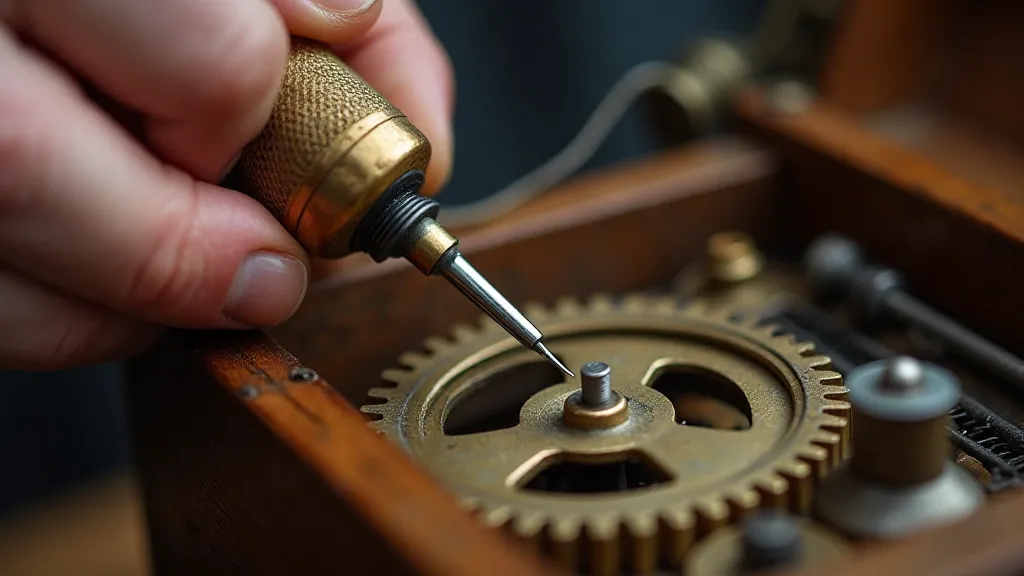
Troubleshooting: Identifying and Addressing Lubrication Issues
Even with careful lubrication, problems can arise. Here’s a quick guide to common lubrication-related issues and how to address them:
- Sluggish Movement: Could indicate under-lubrication or thick oil. Try applying a tiny bit more oil or switching to a thinner grade.
- Squeaking/Grinding: Almost always indicates a lack of lubrication. Carefully apply oil to the affected areas.
- Sticky Movement: May be caused by over-lubrication or oil degradation. Carefully clean the area with a suitable solvent (e.g., isopropyl alcohol) and re-lubricate with a thinner oil.
- Oil Accumulation: Over-lubrication can attract dust and debris, forming sticky deposits. Clean thoroughly with a solvent and apply oil more sparingly.
Understanding the Language of Music Boxes
The world of vintage music boxes has its own vocabulary. Learning a few key terms can be incredibly helpful when discussing repairs, acquiring parts, or simply appreciating the nuances of these intricate devices. This is a useful resource if you would like to familiarize yourself with understanding music box jargon.
Conclusion: Preserving Your Legacy
Proper lubrication is a cornerstone of preserving the functionality and beauty of your vintage musical box. By selecting the right oils and applying them with precision, you can minimize wear, ensure smooth operation, and prolong the life of this cherished heirloom. Remember that patience and a meticulous approach are key to success. With a little care and attention, your vintage musical box will continue to bring joy for years to come.
